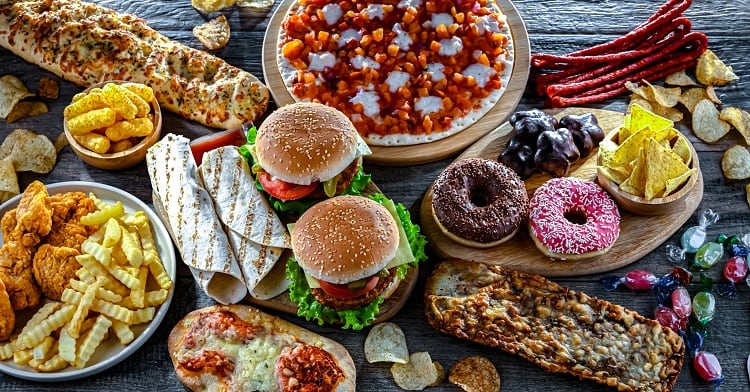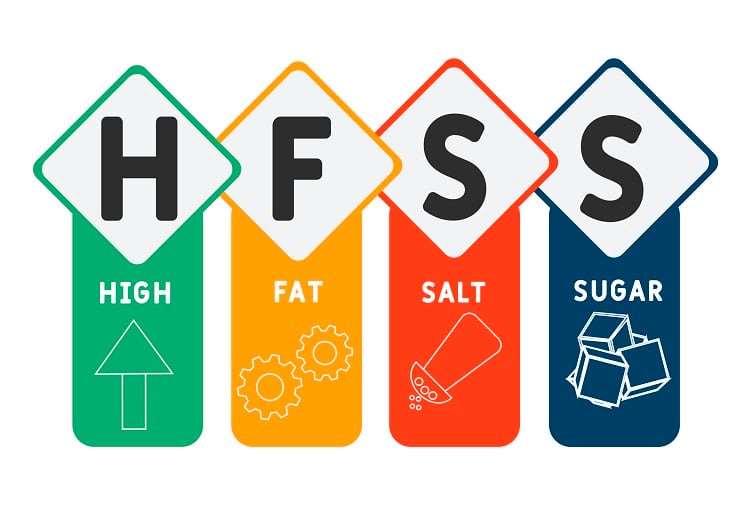It’s been nearly two years since the first phase of restrictions on HFSS products came into force in the UK.
From October 2022, the UK government placed significant curbs on the in-store merchandising of products classified as high in fat, sugar and/or salt (HFSS). These included a ban on secondary promotional locations, such as end-of-aisle displays, store entrances and checkouts.
It was described as ‘the most significant in-store change, in decades’, in the country.
But in a little over 12 months, UK brands and manufacturers, as well as any European suppliers exporting products into the country, face another round of upheaval as the second tranche of rules are set to come into force.
So, what should affected companies expect?
Navigating a volume price ban
As it stands, from October 2025, all HFSS products sold in the UK will face an additional ban on volume price promotions. This includes an end to multibuys and any offers that indicate additional volume is free or discounted. For example, ‘50% extra free’ or ‘buy 300g and save 10%’.
The UK advertising watchdog, the Advertising Standards Authority (ASA), will also impose a ban on advertising any HFSS SKUs on digital or pre-watershed TV the same month.
As with the initial phase of restrictions introduced in 2022, the new rules will apply to all foods that score four or more on the UK’s Nutrient Profile Model. This model attributes points for energy content, saturated fat, sugar and sodium, protein, fibre, fruits and vegetables and nuts, all which are combined to provide a final result.
The rules will be enforced in all medium and large UK retailers, with 50 or more employees, offering prepacked food for sale in store and online, including franchises and symbol group stores. The out-of-home sector is exempt, unless offering free refills of sugary drinks, which will also be subject to the same restrictions.

Mixed messaging
Following elections in the UK in July, the UK’s leftist political party Labour secured a landslide win, replacing the more right-wing Conservative government that had been in power for the previous 14 years. The change throws up new questions as to what the impact might be on the planned changes to marketing HFSS products.
Prior to the election, then Labour shadow health secretary, Wes Streeting, had said a BOGOF (buy-one-get-one-free) ban was off the table. “I want to work in a constructive way with food and drink companies, to see what proactively they can do,” he said in September last year. But then a few months later, the party leader, now prime minister, Keir Starmer, pledged to go ahead with plans to ban pre-watershed junk food ads and clamp down on social media advertising too.
For Ian Wright, former director general of UK trade body, the Food and Drink Federation, and now industry advocate for consultancy Lockton, there’s every reason to expect that both HFSS and ultra-processed foods will be in Labour’s firing line.
"The next few years are replete with risk for manufacturers,” he says. “It has been clear for some years that both HFSS and so-called ultra-processed foods would be in the sights of an incoming government.
“Cost of living concerns and fears of adverse reactions from key voter groups led to delay in implementation of comprehensive restrictions on advertising, promotion or the in-store position of HFSS product,” he adds. But “saving the NHS (National Health Service) is now a major priority for Labour, so obesity reduction targets will determine much food policy for the next five years."
As a result, “manufacturers need to re-examine their business models - in terms of product portfolio, marketing and cost base in the light of likely tightening margins - to face these new realities."

Navigating likely challenges
In the rush to reformulate and avoid restrictions in the coming months, there are a few likely problems that food manufacturers, both in the UK and Europe, should plan for, suggests Luke Withers, UK food and drink industry leader at Lockton.
“It’s important to remember that this change will be happening industry wide and across multiple geographies and that if regulatory pressure is applied, the race for sufficient quantities of new ingredients and alternatives could create resource scarcity or further challenges on supply lines for the industry,” he says.
Manufacturers looking to reduce sugar using sweeteners will also need to navigate a likely influx of questions and concerns. “Managing the risks and perceptions of these new alternatives will be a key consideration and the additional handling, processing and storage risk of these alternative products should be considered alongside the consumer health implications.”
In addition, “as pressure builds and businesses have to start moving faster here, companies should be considering the operational and strategic risks that these shifts in their business model and product mix could present. Looking at current risk registers and exploring how these changes either present new emerging risks or change the dynamic of existing exposures should be a first step. These risks and opportunities should be viewed through a global lens, considering the shifts in consumer and regulatory agendas in international markets."
For Wright, it’s an opportunity for the UK industry, in particular, to work collaboratively to face a common challenge too. “The direction has been clear for several years: industry should be prepared already for the initial steps,” he says. “The next question is ‘whether manufacturers can come together to create a coherent, collective and compelling narrative to combat the coming wave of campaigning for draconian action on ultra-processed food?’
“This would strike at the very heart of the industry’s mass production model. Yet so far, neither major businesses nor representative bodies have made the case for the food manufacturing industry. The risk is that case goes by default."




